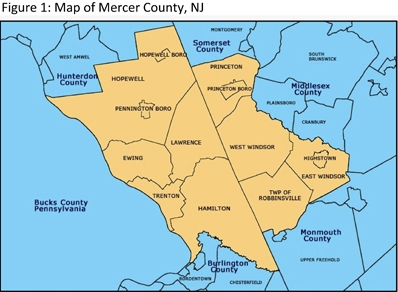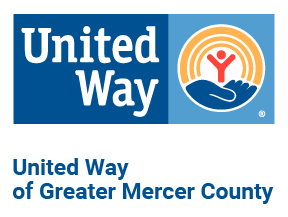MERCER COUNTY COMMUNITY HEALTH ASSESSMENT
I. INTRODUCTION
Improving the health of a community is critical not only in enhancing residents’ quality of life but also in supporting its future prosperity. Health is intertwined into so many aspects of our lives—unsustainable increases in health care costs can drain local businesses and families; early onset of many chronic diseases such as diabetes can have a significant impact on students’ academic achievement; and limited access to programs and services can serve as a barrier to new residents moving to the area. Furthermore, health itself is affected by a multitude of factors—not just by health care, but also by education, housing, employment, transportation, and numerous other underlying issues.
Identifying the health issues of an area and developing a plan to address them are critical steps in the larger health planning process. To accomplish these goals, the Greater Mercer Public Health Partnership (GMPHP)—a collaborative of four community hospitals, eight local health departments, and the United Way—is leading a comprehensive community health planning effort to measurably improve the health of greater Mercer County, NJ residents. This effort, funded through the Robert Wood Johnson Foundation’s New Jersey Health Initiatives, entails two major phases:
1. A community health assessment (CHA) to identify the health-related needs and strengths of greater Mercer County
2. A community health improvement plan (CHIP) to determine major health priorities, overarching goals, and specific strategies to be implemented in a coordinated way across the County
This report discusses the findings from the community health assessment, which was conducted February–June 2012, using a collaborative, participatory approach. These findings will undergird the community health improvement planning process, scheduled to take place July –November 2012, so that discussions and decisions are informed by data.
Purpose and Geographic Scope of the Mercer County Community Health Assessment
The 2012 Mercer County community health assessment was conducted to fulfill several overarching goals, specifically:
1. To examine the current health concerns—as well as new and emerging health issues—among Mercer County residents within the social context of their communities
2. To identify community strengths, resources, forces of change, as well as gaps in services in order to help area organizations and agencies set programming, funding, and policy priorities
3. To enable GMPHP and its partners to use the quantitative and qualitative data gathered to engage the community in a health planning process
4. To provide a report that would fulfill the community health assessment requirement for non-profit hospitals per new IRS guidelines
The 2012 Mercer County community health assessment builds off of previous efforts in the County, namely the 2010 Mercer County community health improvement plan which identified four main priorities for the region: public health resource directory, substance abuse, mental health, and obesity. This current community health assessment discusses these issues as well as explores a range of health behaviors and outcomes, social and economic issues, health care access, and gaps and strengths of existing resources and services.
This community health assessment focuses on greater Mercer County (Figure 1) which is home to numerous communities as well as New Jersey’s capital city, Trenton. The city of Trenton is undertaking a separate assessment study, also with funding from the Robert Wood Johnson Foundation, to examine the specific health needs of city residents. However, given the fluidity of where people work and live in the County and that numerous social service and health organizations in the area serve individuals across the County, it was considered critical to include data and the community voice from Trenton within this assessment as well. While the communities outside of Trenton are the main focus of this report, information on the city is integrated throughout.

Process, Engagement, and Advisory Structure
As with the process for the upcoming community health improvement plan, the community health assessment utilized a participatory, collaborative approach guided by the Mobilization for Action through Planning and Partnerships (MAPP) process. MAPP, a comprehensive, community-driven planning process for improving health, recommends four different broad focus areas to examine for the community health assessment process: 1) health status, 2) community strengths and themes, 3) forces of change (external factors that have an impact health), and 4) the local public health system. Given the focus and scope of this effort, the Mercer County community health assessment focused on and integrates data on the first three MAPP-recommended assessment areas.
To develop a shared vision and plan for the community and help sustain lasting change, the Mercer County assessment and planning process aims to engage agencies, organizations, and residents in the County through different avenues. Figure 2 provides a visual representation of the engagement and decision-making structure of the Mercer County CHA-CHIP process.

Grant funding for this effort was spearheaded by and is currently located within the United Way of Greater Mercer County. The Greater Mercer Public Health Partnership (GMPHP) is the decision-making leadership body which is comprised of 14 area non-profit organizations, including four hospitals (Capital Health Medical Center- Hopewell, Princeton HealthCare System, Robert Wood Johnson University Hospital-Hamilton, St. Lawrence Rehabilitation Center), eight local health departments (Ewing, Hamilton, Lawrence, Hopewell, Montgomery, Princeton, East Windsor, and West Windsor), and the United Way. In January 2012, GMPHP hired Health Resources in Action (HRiA), a non-profit public health organization, as a consultant partner to provide strategic guidance and facilitation of the CHA-CHIP process, collect and analyze data, and develop the report deliverables.
To bestow input throughout the process and serve as a liaison between GMPHP and the larger community, a Community Advisory Board (CAB) was established in January 2012. The CAB is comprised of approximately 60 individuals who represent the local community in all its diverse aspects: business, education, communications, transportation, health and wellness, faith-based groups, civic and government, vulnerable populations (disabled, seniors, etc.), and other organizations and specialized areas. To facilitate efforts and provide targeted guidance, members of the United Way, GMPHP, and CAB joined collaborative teams on Data, Communications, Outreach, and Planning to discuss more focused activities related to these areas.
The GMPHP and CAB have been reaching out to the larger community through communications and meetings to discuss the importance of this planning process. Additionally, the community has been engaged in focus groups and interviews during the comprehensive data collection effort of the community health assessment. Public events and media will further reach out to the public to broadcast and elicit feedback on the CHA findings and CHIP priorities and strategies.
